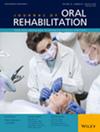Effects of Non-Pharmacological Interventions on the Swallowing Function of Patients With Post-Stroke Dysphagia: A Systematic Review and Network Meta-Analysis
Abstract
Background
Post-stroke dysphagia can lead to serious complications and appropriate rehabilitation can significantly improve swallowing function. However, the best rehabilitation method for post-stroke dysphagia patients is not clear at the present stage, so it is necessary to conduct a comprehensive network meta-analysis and systematic review of different interventions for dysphagia.
Objective
To compare the effectiveness and ranking of different interventions for improving swallowing function, and feeding and daily function in patients with post-stroke dysphagia.
Methods
Seven databases were searched from the date of inception to September 1, 2022. Two investigators independently conducted literature searches, selected randomized controlled trials on dysphagia interventions, and assessed study quality. Network meta-analysis was conducted by using Stata software.
Results
A total of 33 studies involving 1,341 patients were included. According to the ranking probabilities, acupuncture was rated as the most effective of all interventions to enhance patients' swallowing function (surface under cumulative ranking curve values [SUCRCV]: 99.0%, standardized mean difference [SMD]: −2.40, 95% confidence interval [CI]: −3.38 to −1.43), followed by the chin tuck against resistance exercise (CTAR, SUCRA: 89.9%, SMD: −1.83, 95% CI: −2.69 to −0.97). Among all the interventions, acupuncture was the most effective for feeding and daily function (SUCRCV: 88.4%, SMD: −1.62, 95% CI: −2.94 to −0.30).
Conclusions
The results showed that acupuncture was the most effective in the rehabilitation of patients with post-stroke dysphagia, followed by CTAR. Considering that CTAR is a low-cost and highly feasible intervention, we suggest that CTAR should be selected as a rehabilitation measure for patients with post-stroke dysphagia to improve their swallowing function.


 求助内容:
求助内容: 应助结果提醒方式:
应助结果提醒方式:


